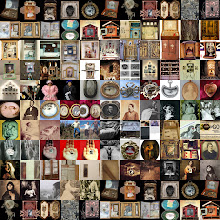This talk at the Wellcome Collection was part of Cold Ensembles' Anatomy Season, and it explored the links between travelling, journeys, mapping and visualising the inside of the body. The speakers were Anatomy Professor Susan Stranding, Visual Culture Lecturer Marius Kwint and Linguist Dr Laura Wright, and the talk was chaired by Daniel Glaser from the Wellcome.
Stranding's presentation was a journey through the history of anatomy, emphasising the change in methods of representation with evolving technology, and the unprecedented possibility of looking inside the live body, as opposed to models based on the use of cadavers.
In my view, MIR scans imply a radical change in the cultural meanings attached to medical images, no longer associating them to death, no longer implicitly violent, no longer passive flesh subjected to a penetrating gaze.
Although the viewing of the inside no longer implies violence, it does not breach the alienating distance between doctor and patient, but potentially increases it. Robotic assistants can be used to perform simple procedures, and doctors can operate long-distance. From medieval operations where the doctor instructed to the butcher-surgeon without dirtying his hands until today, the health practitioner remains at a very clearly marked distant position to the patient, dealing with an inanimate nameless body, not the person.
It was really interesting to hear the comment from a medical student in the crowd, regarding her relationship to her assigned corpse for the duration of the course, and how there was a need to refrain from giving it a name and not think about the life of the person, to be able to do "horrible things to it". The fact that Western medicine is highly reliant on cutting the body open to treat it, attaches a horrific side to the body under the skin, that inside that we only know through implicit violence.
This horror of the insides becomes repressed under skin with procedures that prevent our eye from enduring it. It is the case of modern Minimally Invasive Surgery where small incisions allow the insertion of miniaturised surgical instruments into a body cavity or structure. It seems that we might be moving from the open cut procedures derived from dissection practices, to new ways of making surgery that do not relly on the cut.
Stranding ended her talk with Natural Orifice Translumenal Endoscopic Surgery (NOTES) where natural orifices, like the mouth, the vaginal opening and the anus, are employed as access routes into the body for surgery. This was specially pertaining to my work, one could say the vagina not only precedes but also finally outlives the surgical cut.
Marius Kwint exposed how ways of representing and experiencing landscapes through travel permeate to anatomy, giving rise to the ideas of 'a journey of discovery', a quest with scientific mission, being associated to the world beyond the dermis. The revealing of hidden mysteries also fits, as the aim to elucidate the secrets of generation motivated early dissectors to access the uterus (K. Park).
Not only is it about discovering and conquering unknown territory to man, but also to exercise authority and display one's conquest, or possessed and tamed virginal wild land (female sexuality). Spectacle played an important role in operating theatres and anatomical models, utterly exemplified in Gunter von Hagen's Body Worlds touring anatomical cabinet of curiosities.
Following the idea that an anatomical illustration is like a map of the interior landscape, I did a collage merging an anatomical drawing of the legs with relief countours, other map references and word-labels (below) illustrating the association between notions of place, direction and orientation with personal experiences (memory, emotions, life choices) and life as a path. This was part of a series called Embody for a commission proposal.
Where My Legs Take Me




